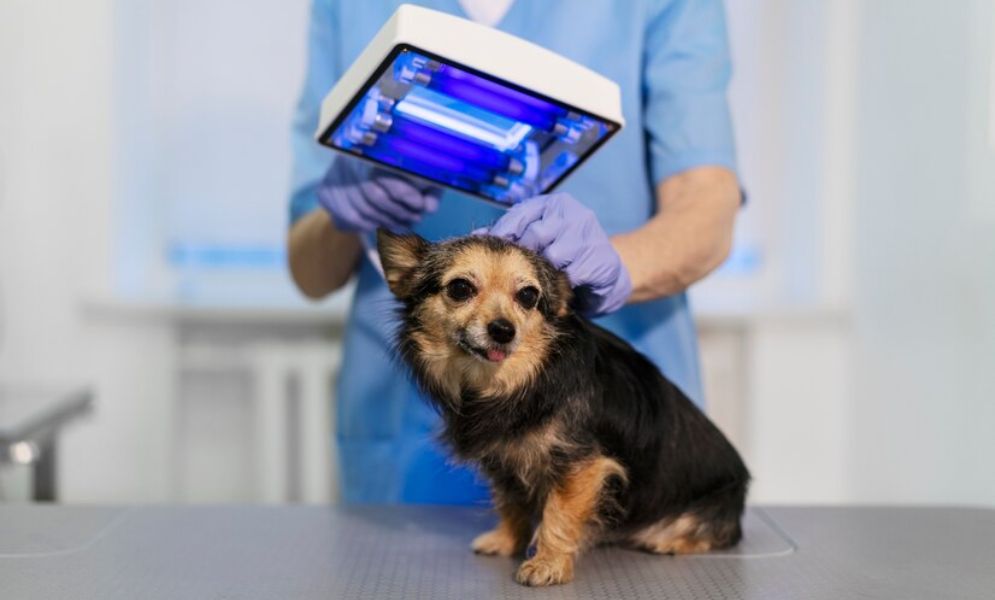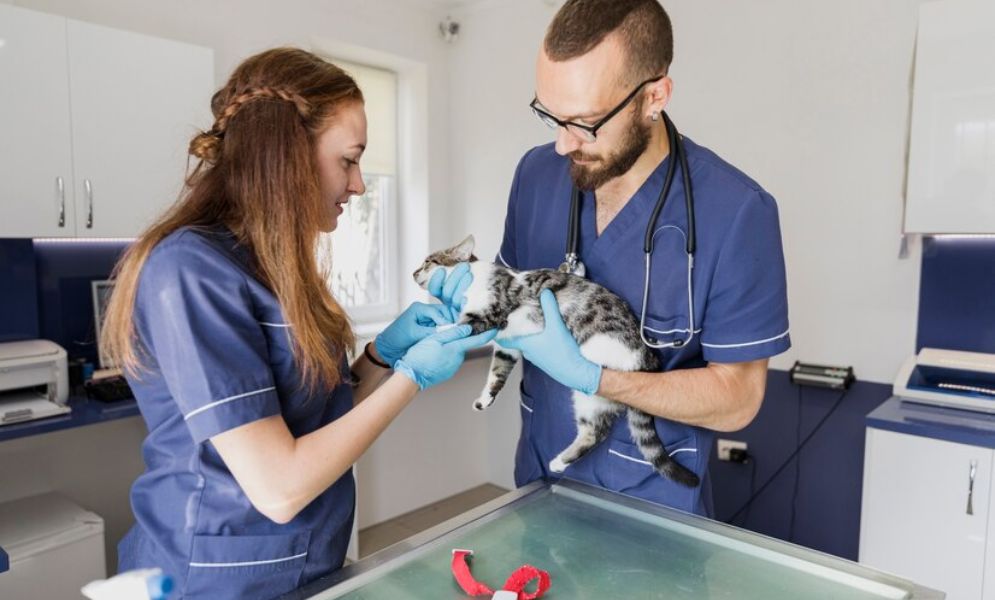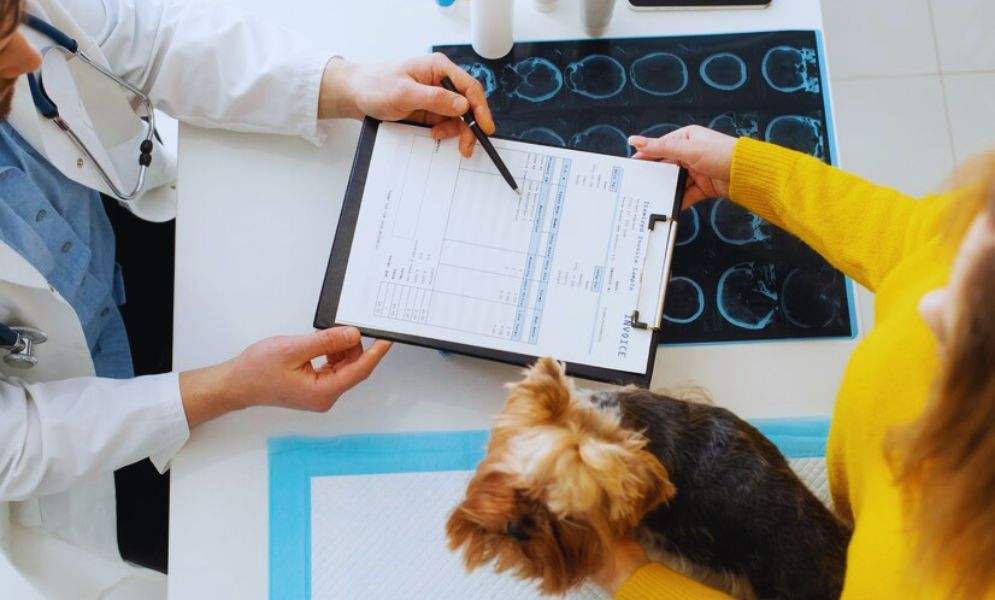The Role of Diagnostic Technology in Veterinary Emergencies


Imagine this: It’s the middle of the night, and your beloved pet suddenly falls ill. Panic sets in, and you rush to the nearest veterinary clinic, hoping for a miracle. In these critical situations, every minute counts. Whether it’s a sudden injury, a severe illness like projectile vomiting, or unexplained symptoms, a quick and accurate diagnosis in these situations goes a long way in saving your pet’s life.
Diagnostic technology in veterinary emergencies plays a vital role. It allows vets to quickly assess internal damage, detect diseases, and identify the root cause of your pet’s condition. From advanced imaging tools to blood tests, diagnostic technology helps pinpoint problems that are not visible to the naked eye. Let’s look at how these tools are used during veterinary emergencies and why they are essential in making the right decisions for your pet’s care.
The Importance of Diagnostic Tools in Veterinary Emergencies

Pets can’t tell us when something is wrong, so diagnostics technology in veterinary medicine is critical. When a pet is brought in for emergency vet care, they often have symptoms that can have multiple causes. Without diagnostic technology, it would be impossible for a vet to determine the exact issue quickly enough to administer life-saving treatment.
For example, if your cat is experiencing difficulty breathing, the cause could be anything from a respiratory infection to heart disease or a foreign object lodged in the airway. Similarly, vomiting or lethargy in a dog could indicate anything from a simple upset stomach to a serious obstruction or internal bleeding. Diagnostic tools provide immediate insights, helping veterinarians make informed decisions.
Advanced Imaging: X-rays, Ultrasounds, and CT Scans
Imaging technology is one of the most powerful diagnostic tools used in veterinary emergencies. Imaging allows vets to “see” inside your pet’s body, providing a clear picture of their bones, organs, and tissues. These images are crucial when dealing with injuries or illnesses that aren’t visible on the surface.
X-rays
X-rays are one of the most common imaging tools used in emergency veterinary care. They are particularly effective for detecting fractures, bone damage, or foreign objects inside your pet’s body. In cases of trauma—such as when a pet is hit by a car—X-rays can reveal broken bones or internal injuries that need immediate attention. They are also used to identify blockages in the digestive system, which often require surgery to remove.
Ultrasounds
Ultrasound technology is used to examine soft tissues, such as the heart, liver, kidneys, and abdominal organs. It provides real-time images of what’s happening inside your pet’s body. It is often used when a pet is experiencing symptoms like abdominal pain, vomiting, or difficulty urinating. Ultrasounds can help detect fluid buildup, tumors, or organ abnormalities. Thus allowing vets to make a more precise diagnosis.
CT Scans
For more complex cases, CT scans offer a deeper and more detailed look into your pet’s body. Unlike X-rays, which provide a two-dimensional view, CT scans create a 3D image. This allows vets to examine tissues, organs, and bones more accurately.
CT scans are particularly useful for identifying tumors, brain injuries, or spinal problems. At URvet Care, state-of-the-art CT scan technology is available to ensure your pet gets the most advanced care possible when faced with serious emergencies.
Bloodwork and Laboratory Testing
In addition to imaging, blood tests and other laboratory diagnostics are crucial for detecting underlying health conditions. Blood tests can reveal issues like infections, kidney or liver disease, and even cancer. They also help veterinarians assess your pet’s overall health by checking red and white blood cell counts, electrolyte levels, and organ function.
For example, if your pet is experiencing weakness or fainting, a blood test might show an imbalance in electrolytes or indicate anemia. In the case of poisoning, specific blood tests can detect toxic substances. This enables the vet to come up with the best course of treatment.
Routine bloodwork is often part of emergency care, but it’s also essential in pet check-ups to monitor ongoing health and prevent future crises.
The Role of Diagnostic Technology in Emergency Surgery

When a pet needs emergency procedures like surgery, diagnostic technology is indispensable. Before surgery, imaging tools and blood tests help vets identify the problem and determine the safest way to proceed. During surgery, these technologies continue to play a role, ensuring that the vet can monitor your pet’s condition and adjust the procedure as needed.
For instance, if your pet needs emergency surgery to remove a foreign object or repair an injury, diagnostic imaging will help locate the problem area. The tool can also help guide the surgical procedure. After surgery, follow-up imaging can confirm that the issue has been resolved. At the same time, bloodwork helps monitor recovery and detect any signs of infection or complications.
Here are some reasons for using diagnostic technology in veterinary emergencies:
Minimally Invasive Procedures
Many diagnostic tools are non-invasive or minimally invasive, reducing the stress and risk for the animal. Techniques like digital radiography and ultrasound allow vets to see inside the body without the need for surgery. This helps in reducing the discomfort and improving recovery time for our pets.
Monitoring and Ongoing Care
Diagnostic tools are not just for initial diagnosis; they are also vital for monitoring our pet’s condition throughout the treatment process. Continuous monitoring using tools like ECGs (electrocardiograms) and blood pressure monitors helps veterinarians track our pet’s progress and adjust treatments as needed.
Improved Prognosis and Recovery Rates
The use of diagnostic tools in veterinary emergencies leads to better prognosis and recovery rates. Accurate and timely diagnosis, combined with effective treatment plans, significantly enhances the chances of recovery for critically ill or injured animals. This not only saves lives but also improves our pets’ quality of life post-treatment.
Next-Generation Veterinary Care
Advances in veterinary diagnostics have transformed emergency care, allowing for quicker, more accurate diagnoses and better outcomes for pets. Clinics like URvet Care are at the forefront of these advancements, offering next-generation veterinary care that integrates the latest diagnostic tools with compassionate, expert treatment.
Whether your pet requires a routine cat wellness exam or faces a critical emergency, URvet Care’s team of skilled veterinarians provides comprehensive pet care with access to advanced specialty treatments. Their use of cutting-edge technology, including state-of-the-art diagnostics and personalized care, ensures your pet receives the highest standard of treatment in any situation.
Reducing Stress with a Seamless Experience
Veterinary emergencies can be overwhelming for both pets and their owners. However, modern diagnostic technology has played an important part in reducing pet parents’ stress. While it is given that you will worry if something happens to your pet, increased use of these tools means that vets can diagnose problems faster, reducing the time your pet spends in distress and allowing for immediate treatment.
At URvet Care, the goal is to provide not only the best possible care but also a home-like environment where pets and their owners feel supported during difficult moments. With integrated pet care services that cover everything from emergency treatment to follow-up care, you can trust that your pet’s health is in expert hands.
Diagnostic technology has completely changed how veterinarians approach emergency care, offering precise insights that help save lives. From X-rays and ultrasounds to CT scans and bloodwork, these tools are invaluable in diagnosing serious conditions quickly and accurately.
When your pet faces an emergency, you want to ensure they receive the best possible care. With the latest diagnostic technology, URvet Care provides high-quality pet healthcare, ensuring that your pet gets the treatment they need when they need it most. Whether it’s a routine visit or a life-threatening emergency, advanced diagnostics are the key to ensuring your pet’s health and happiness.








Leave A Comment